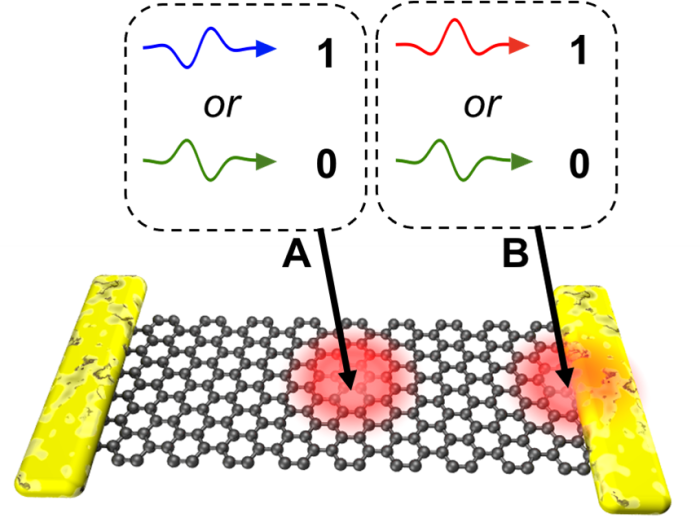Thursday, 15 September 2022
A study on ultrafast light-based logic in graphene discussed by Dr. Tielrooij in ‘Nature Materials’
ICN2 group leader Dr Klaas-Jan Tielrooij is the author of a perspective article in the “News & Views” section of the latest issue of “Nature Materials” that summarizes and highlights the relevance of a study recently published in “Nature”. This work provides a proof-of-concept demonstration of an ultrafast logic gate, using graphene and short laser pulses, which has incredibly promising applications in ultrafast signal processing.

Many journals of the ‘Nature’ family include in their pages a ‘News & Views’ section, where particularly remarkable works that have recently been published are discussed by invited authors, experts in the relative field. In the September 2022’s issue of “Nature Materials”, Dr Klaas-Jan Tielrooij, leader of the ICN2 Ultrafast Dynamics in Nanoscale Systems Group, offers an overview of and comments on a study led by Prof. Peter Hommelhoff –from the Friedrich-Alexander-Universität Erlangen-Nürnberg (FAU, Germany)– and Prof. Ignacio Franco –from the University of Rochester (USA)— in which an ultrafast logic gate is achieved by exploiting the photo-response of graphene and the ability to precisely control the waveform shape of ultrashort laser pulses.
In their work, few-femtosecond light pulses with controlled waveform were used to trigger the production of charge carriers, which were collected by gold electrodes. In particular, the authors took advantage of the fact that two different types of electron excitation can occur – ‘real’ or ‘virtual’ charge carriers can be produced— and that, depending on the (symmetric or asymmetric) waveform of the laser pulses and the precise location where the light strikes the graphene channel, one type can be predominant over the other.
Two light pulses having either one of two different waveforms were focused onto a graphene channel at a central and a lateral spot, respectively, and the sum of the photocurrents produced by them was measured. By assigning these signals a logical zero or one on the basis of their shape and phase, the researchers could observe an output signal that changed according to the logical truth table of a NOR gate. This means that the device was able to reproduce the behaviour of a functionally complete logic operator. Consequently, logical operations on strings of zeros and ones could be achieved using a sequence of symmetric and asymmetric waveforms, which has the potential to enable extremely high computation speeds.
As Dr. Tielrooij underlines, there are still many challenges to be overcome before this or other methods can be employed to actually perform useful computing operations at speeds above a gigahertz. However, this study once again confirms the astonishing potential of ultrafast optoelectronics based on graphene for applications in information and communication technologies.
Image: Illustration of the concept of the ultrafast graphene-based logic gate that exploits waveform control of femtosecond light pulses. [Credit: Dr Klaas-Jan Tielrooij/ICN2]
Reference articles:
KJ. Tielrooij, Ultrafast light-based logic with graphene. Nat. Mater. (2022). DOI: 10.1038/s41563-022-01367-2
Boolakee, T., Heide, C., Garzón-Ramírez, A. et al., Light-field control of real and virtual charge carriers. Nature 605, 251–255 (2022). DOI: 10.1038/s41586-022-04565-9

